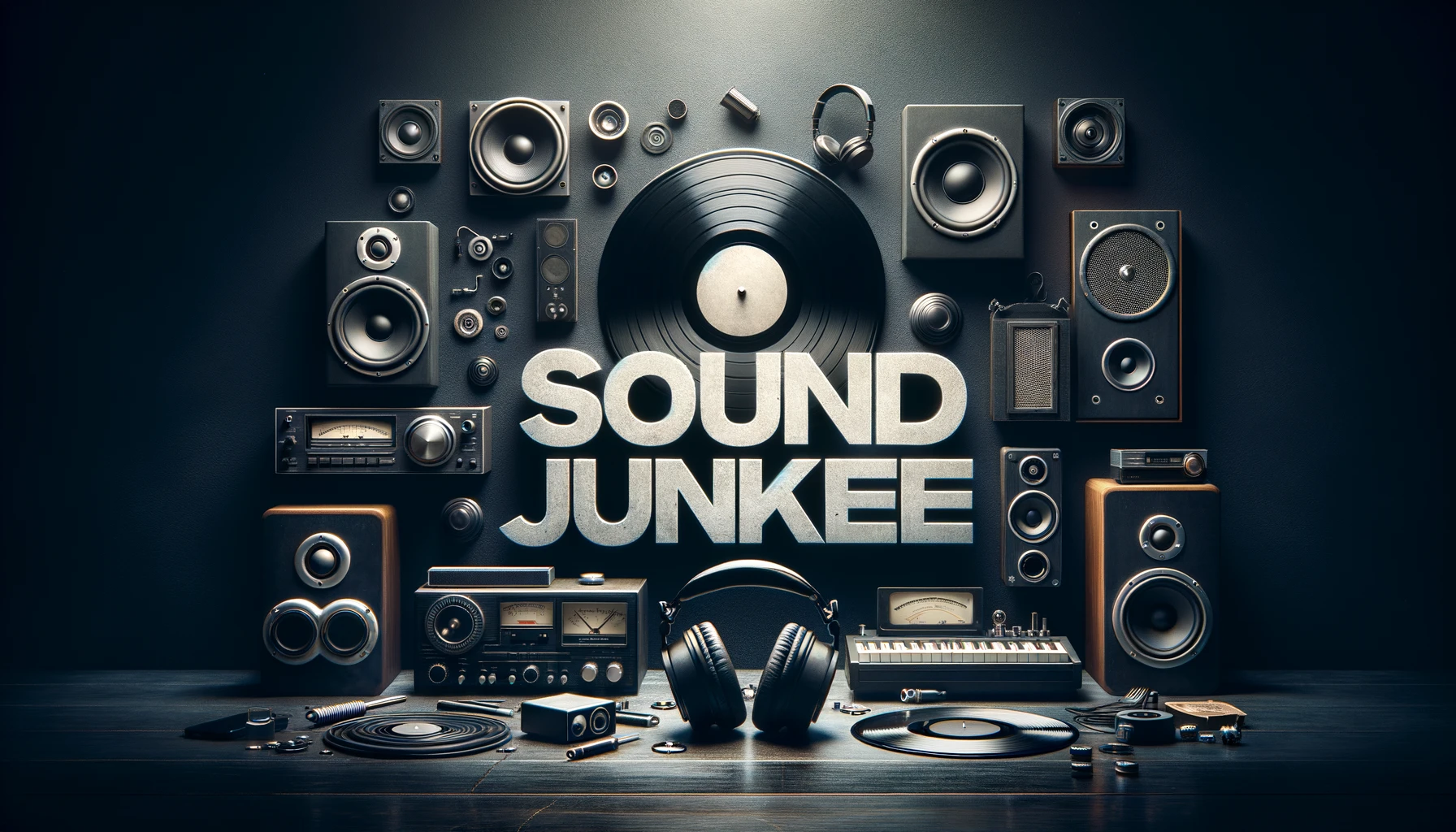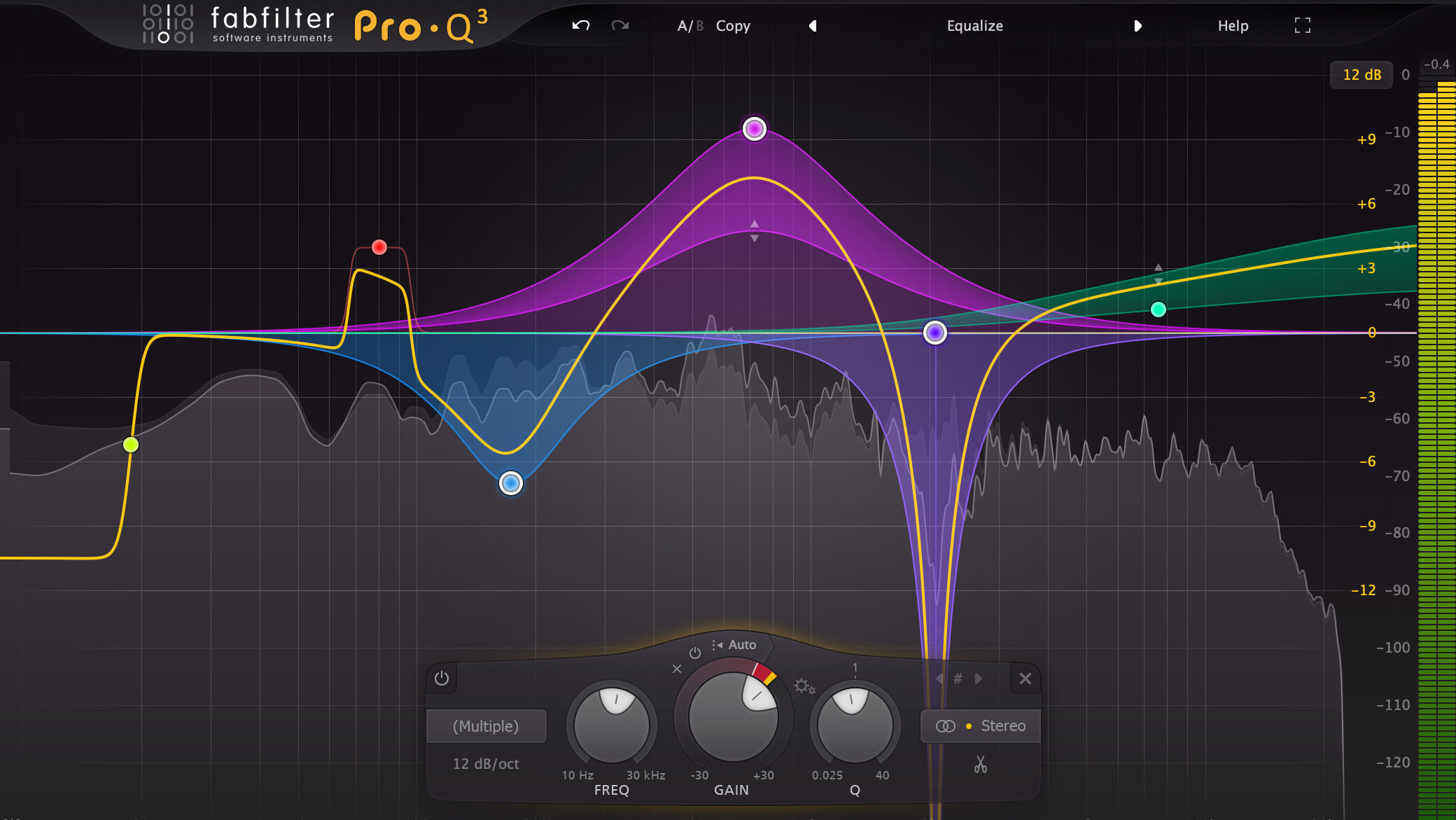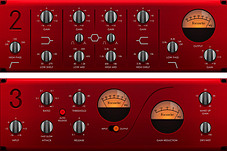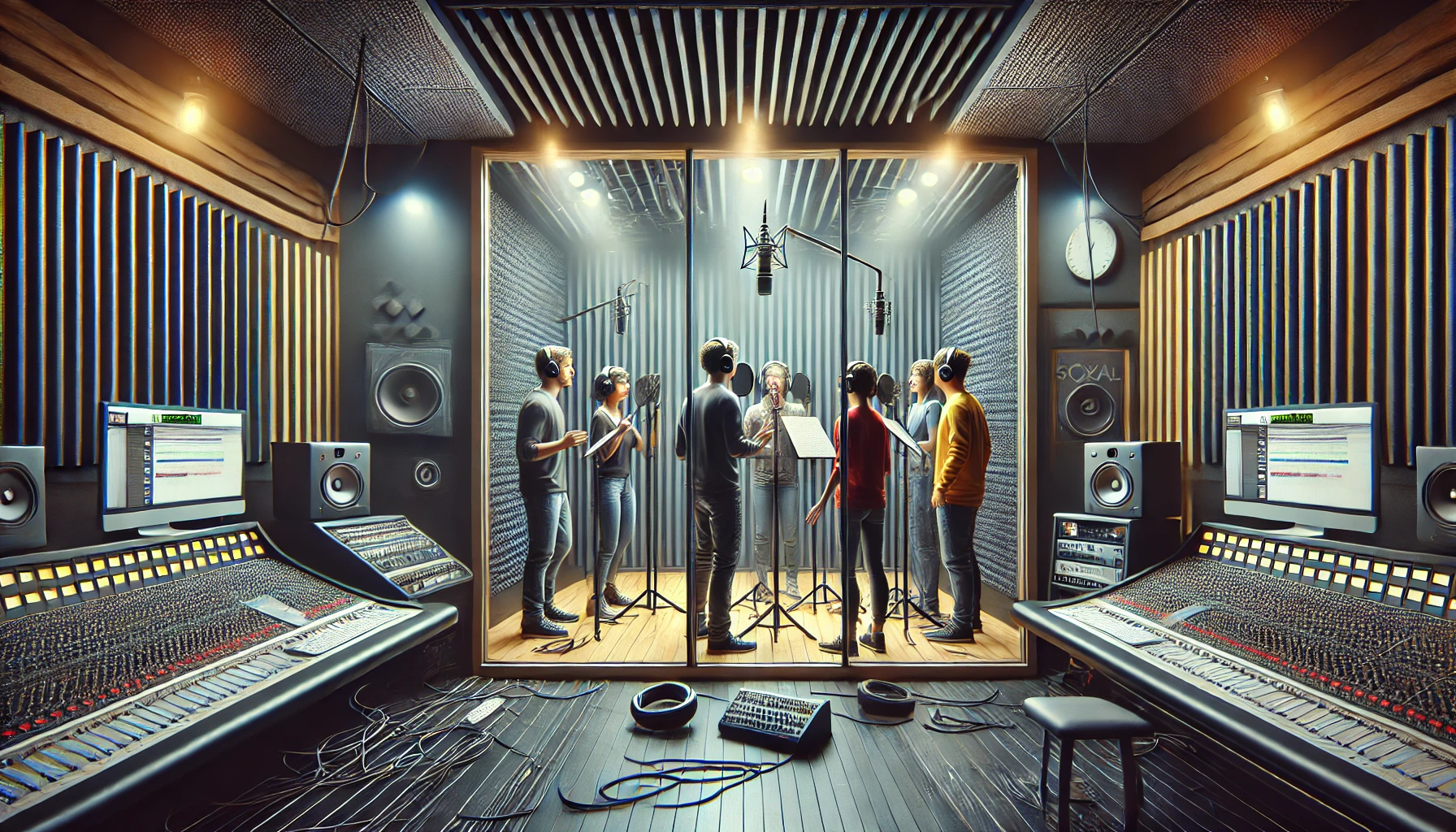In audio production, Equalisation (EQ) and Compression are not just tools on a checklist; they’re the essence of how we craft a mix. Whether it’s giving a vocal its distinct clarity or ensuring that bass line sits just right, these tools play a crucial role in shaping the sonic quality of a track.
But there’s a persistent debate among audio professionals: “Should I EQ before or after compression?” This decision, while technical, has significant implications for the final output of a mix. It’s not just about the order; it’s about understanding the nuances of sound and how different tools interact with it.
Table of Contents
EQ
EQ, is more than just adjusting bass, mids, and treble. It’s the art and science of sculpting sound. At its core, EQ is about carving out a space for every instrument or sound, ensuring they don’t step on each other’s toes. Think of it like a sonic jigsaw puzzle; each piece has its unique place and you’re in charge of moving things out of each others way.
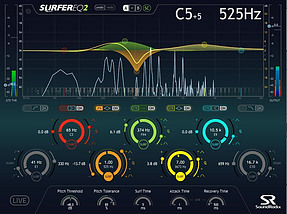
In the studio, we often come across things that sound great on their own, but clash and sound muddy when combined. Imagine crafting the ambiance for a dense forest scene in a film.
Or maybe the bass guitar is drowning out the kick drum, or the vocals are getting lost amidst the guitars.
Without proper EQ, the rustling leaves might mask the distant bird calls, or the footsteps of a character might get lost amidst the ambient noise.
Similarly, in a musical mix, the warmth of a bass guitar might overshadow the nuances of a mid-range instrument like a guitar or keyboard. EQ allows us to surgically enhance or diminish specific frequencies, ensuring clarity and depth in any audio landscape.
Compression
Compression, on the other hand, is all about dynamics. If you’ve ever wondered how professional tracks maintain a consistent volume or how certain elements punch through the mix, compression is the magic behind it. But it’s not just about making things loud; it’s about control.

Dynamics are the peaks and valleys of audio—the difference between the loudest and softest parts. In some cases, these dynamics are essential, like the ebb and flow of a classical piece.
But in modern music, unchecked dynamics can lead to a mix that’s uneven or instruments that disappear. It’s the tool that ensures a whispered dialogue in a tense movie scene is as clear as a shouted line in an action sequence.
By reducing the dynamic range with compression, we ensure that the listener gets a consistent experience, whether listening on high-end studio monitors or earbuds on a busy street.
But compression isn’t just a utility tool; it’s also a creative one. Want to add sustain to a guitar or give a snare drum that ‘snap’? Compression, when dialled in right, can transform the character of an instrument, making it punchy, smooth, aggressive, or laid-back.
EQ Before Compression
Advantages:
- Pre-EQing ensures that the compressor doesn’t exaggerate unwanted frequencies. For instance, a resonant peak in a vocal can be tamed before it triggers the compressor.
- By shaping the sound first, the compressor can work more efficiently, reacting to a more refined signal.
Music Production Scenarios:
- Vocals with Sibilance: If a vocal track has excessive sibilance (sharp “s” or “sh” sounds), you might use EQ to tame these before they hit the compressor. This ensures the compressor doesn’t overreact to these sharp sounds.
- Boomy Acoustic Guitars: Acoustic recordings can sometimes have an overpowering low-mid resonance. By cutting these frequencies before compression, you ensure the compressor doesn’t emphasise this boominess.
- Bright Brass Instruments: If a brass section is too bright or piercing, a slight dip in the high frequencies before compression can prevent those frequencies from dominating the mix.
Sound Design Scenarios:
- Footsteps on Different Surfaces: When designing the sound of footsteps on gravel versus wood, you might EQ to emphasise the crunchiness for gravel. By doing this before compression, the compressor will then react to this emphasised crunch, making it more pronounced.
- Engine Noises: If you’re designing the sound for a vehicle and the engine has an unwanted rattle, you’d EQ out that rattle before compressing the overall engine sound.
- Ambient City Sounds: When designing a bustling city soundscape, you might want to EQ out certain low-frequency rumbles from traffic before compressing the overall ambiance for consistency.
EQ After Compression
Advantages:
- Post-EQing allows for corrective measures after the dynamics are set. If compression makes a track sound too dull or bright, EQ can restore balance.
- It provides an opportunity to add “colour” or “character” to a sound after its dynamics have been controlled.
Music Production Scenarios:
- Mastering a Track: After compressing to achieve a desired dynamic range, you might use EQ to make final tonal adjustments, ensuring the track sounds balanced on various playback systems.
- Drum Overheads: After compressing overhead drum mics to get a consistent level, you might EQ to brighten the cymbals or add some air.
- Synth Pads: For synthesized pads that have been compressed for a smooth, sustained sound, post-compression EQ can help in adding warmth or clarity.
Sound Design Scenarios:
- Explosions: After compressing an explosion sound to make it impactful, you might use EQ to add more low-end rumble or to tame excessively sharp high frequencies.
- Dialogue in a Scene: Once dialogue has been compressed to ensure audibility and consistency, EQ can be applied to enhance clarity or to make it fit better within a particular environment, like a cavernous hall or a small room.
- Nature Ambiences: After compressing a forest ambiance for consistent levels, post-compression EQ can be used to emphasize the chirping of morning birds or the rustling of leaves.
Factors to Consider
Source Material: Whether you’re mixing a song or designing sound for a film, the quality and nature of the source material play a significant role. A well-recorded studio track might only need subtle EQ tweaks, whereas a field recording for a film might capture unwanted ambient noises that require more aggressive EQ before compression.
Desired Outcome:
In music production, the desired outcome might vary based on genre. A raw, gritty rock track might benefit from the coloration that comes from EQing after compression, while a clean pop vocal might shine with EQing before. In sound design, the desired outcome is often tied to the narrative or scene.
For instance, a dialogue in a tense, quiet scene might require different processing compared to a loud action sequence.
Genre-specific and Scene-specific Considerations:
In music, a trance track might prioritize a pumping compression effect, influencing the EQ decisions, while a jazz piece might focus on natural tonality. In sound design, the setting and context are crucial. Designing sound for a bustling city scene in a game will have different considerations compared to a serene countryside in a movie.
The environment, context, and emotional tone dictate the approach.
The Medium of Playback:
This is especially important in sound design. If you’re designing sound for a theatre movie, the dynamics and frequency response will differ from designing for a mobile game played on headphones. Similarly, in music, considering where most listeners will consume the track (streaming platforms, radio, vinyl) can influence your EQ and compression decisions.
Creative Intent:
Sometimes, rules are meant to be bent or broken. In music, you might want a vintage sound, leading you to EQ after compression for that specific coloration. In sound design, maybe you’re aiming for a surreal or otherworldly ambiance, leading you to process sounds in unconventional ways.
in a nut shell 🥜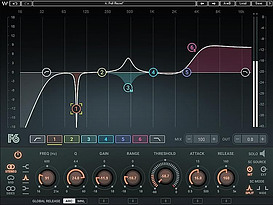
In audio production, EQ and compression are two instrumentalists playing in harmony. While there are plenty of guidelines and theories, rules are meant to be broken.
The order of EQ and compression is less about right or wrong and more about understanding the tools and the desired outcome. So, let your ears be the final judge.
